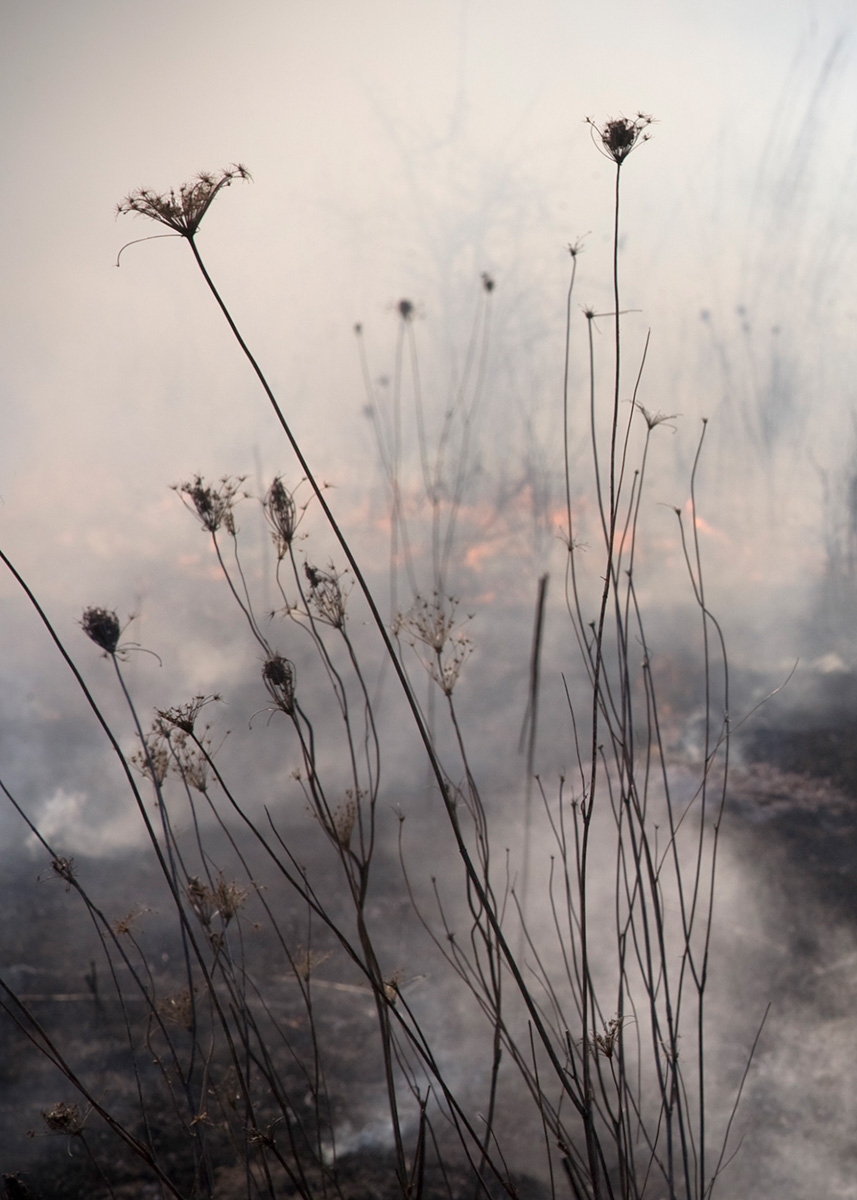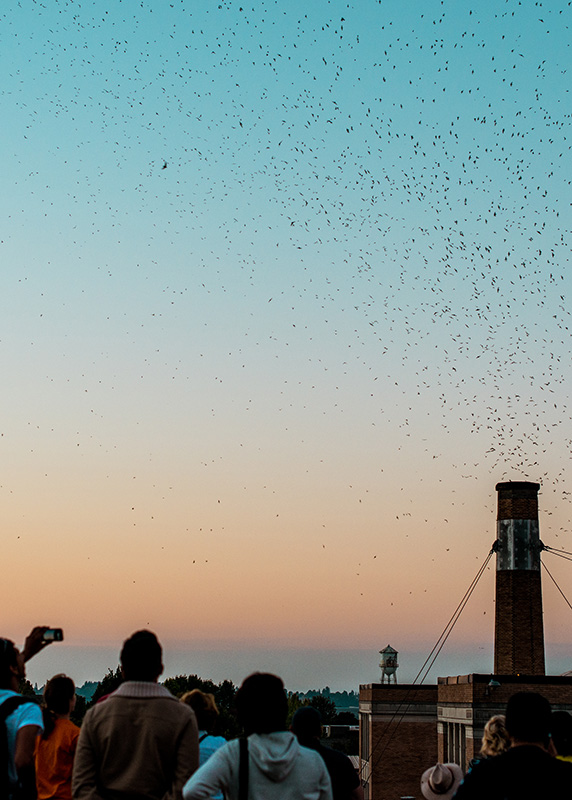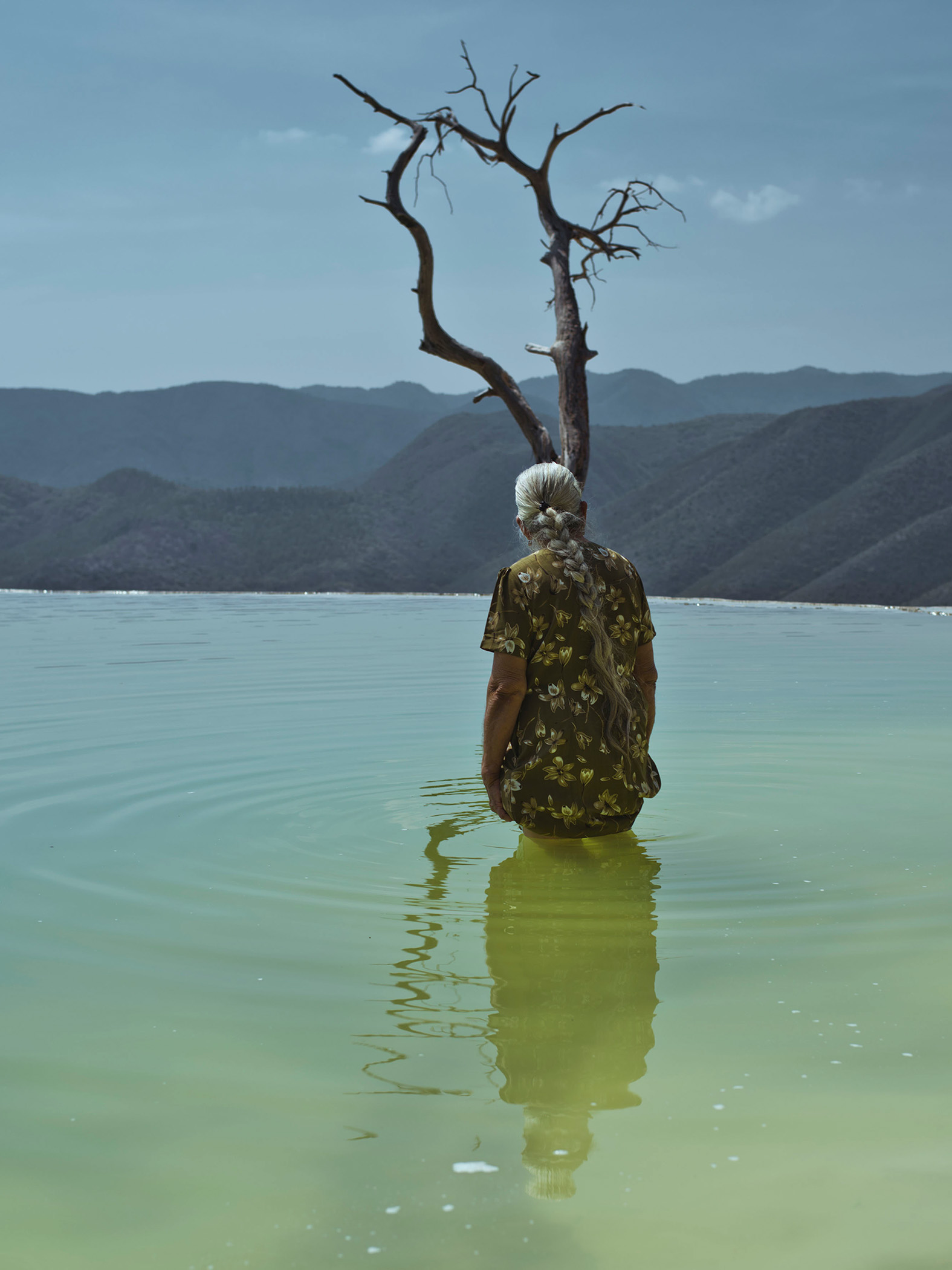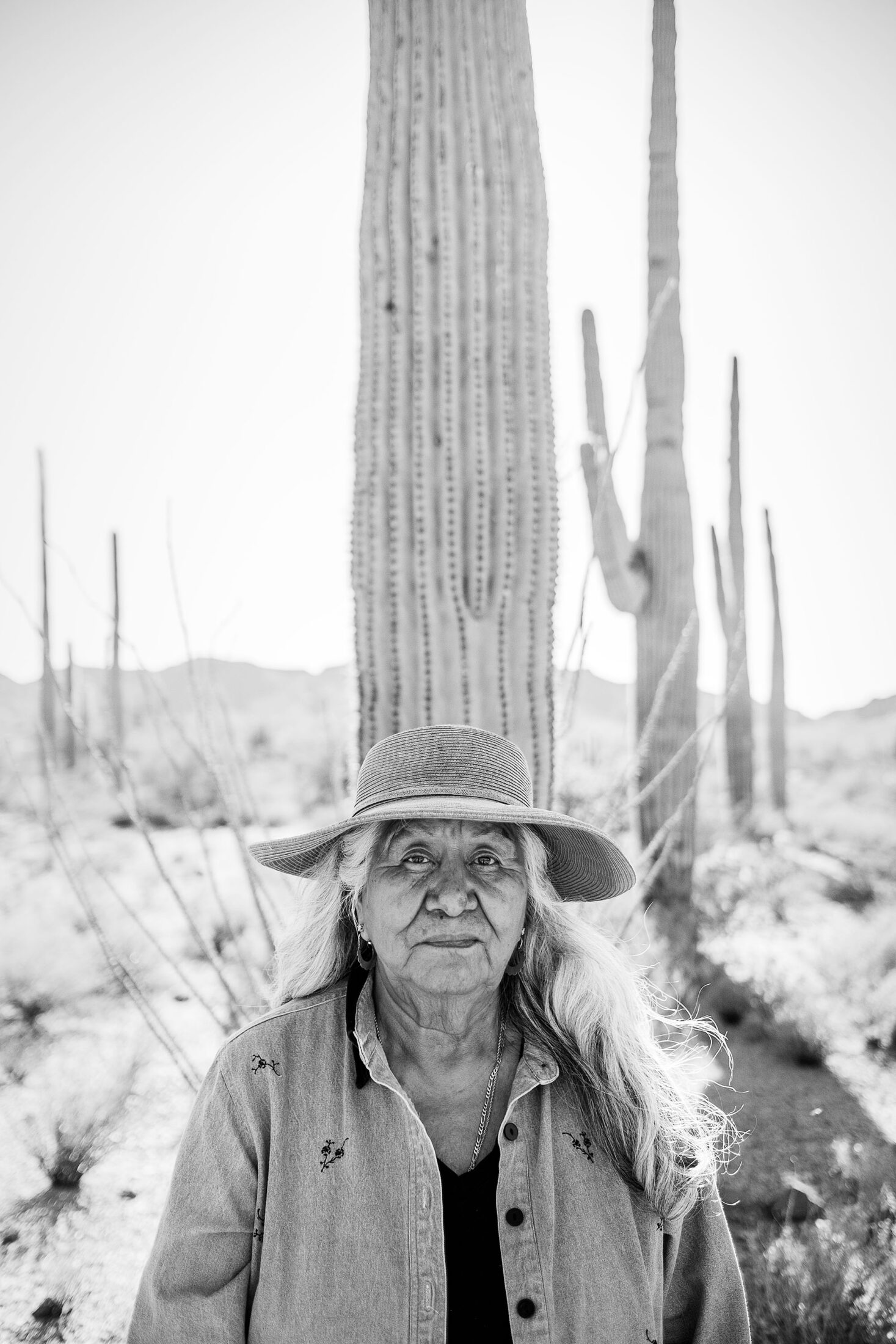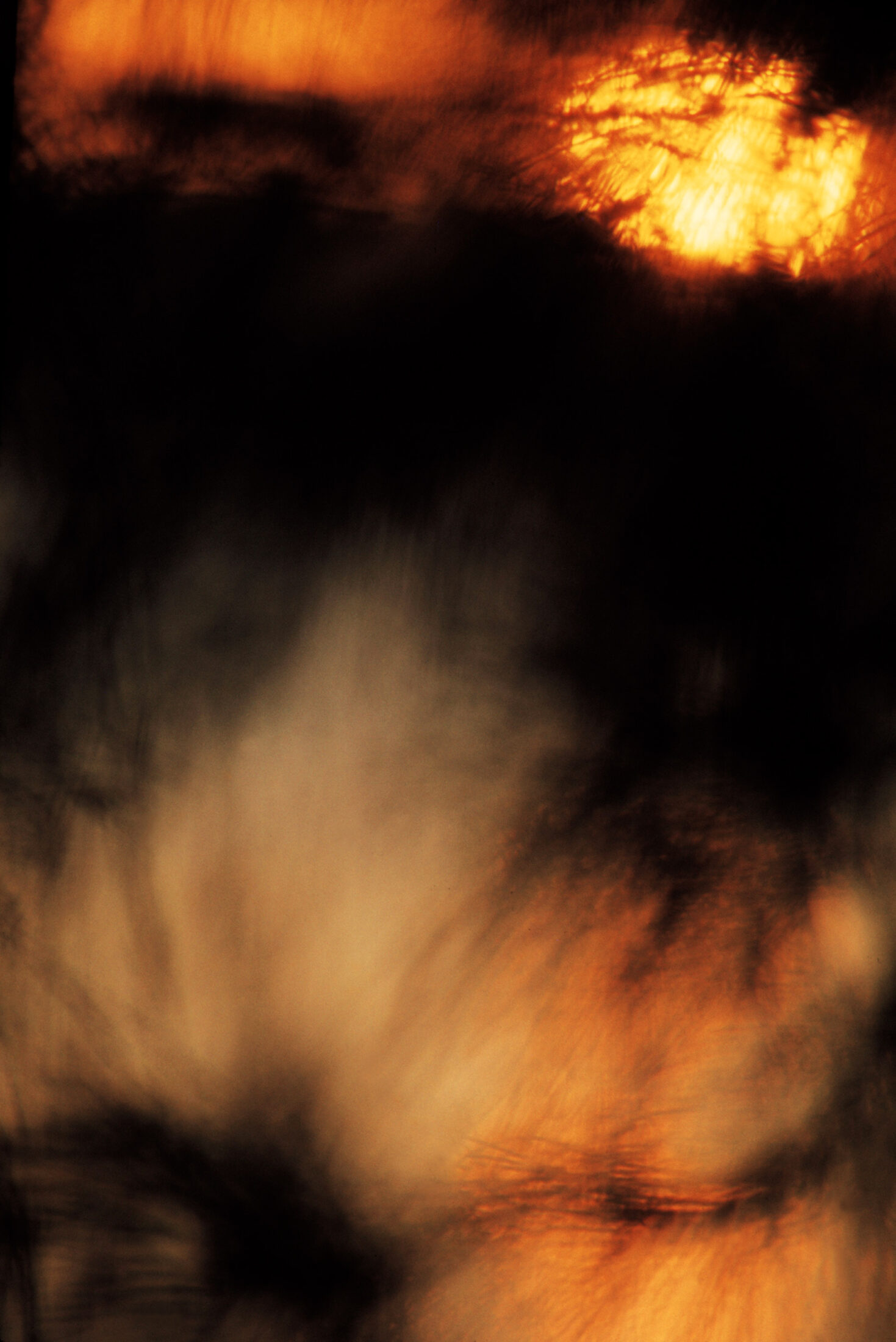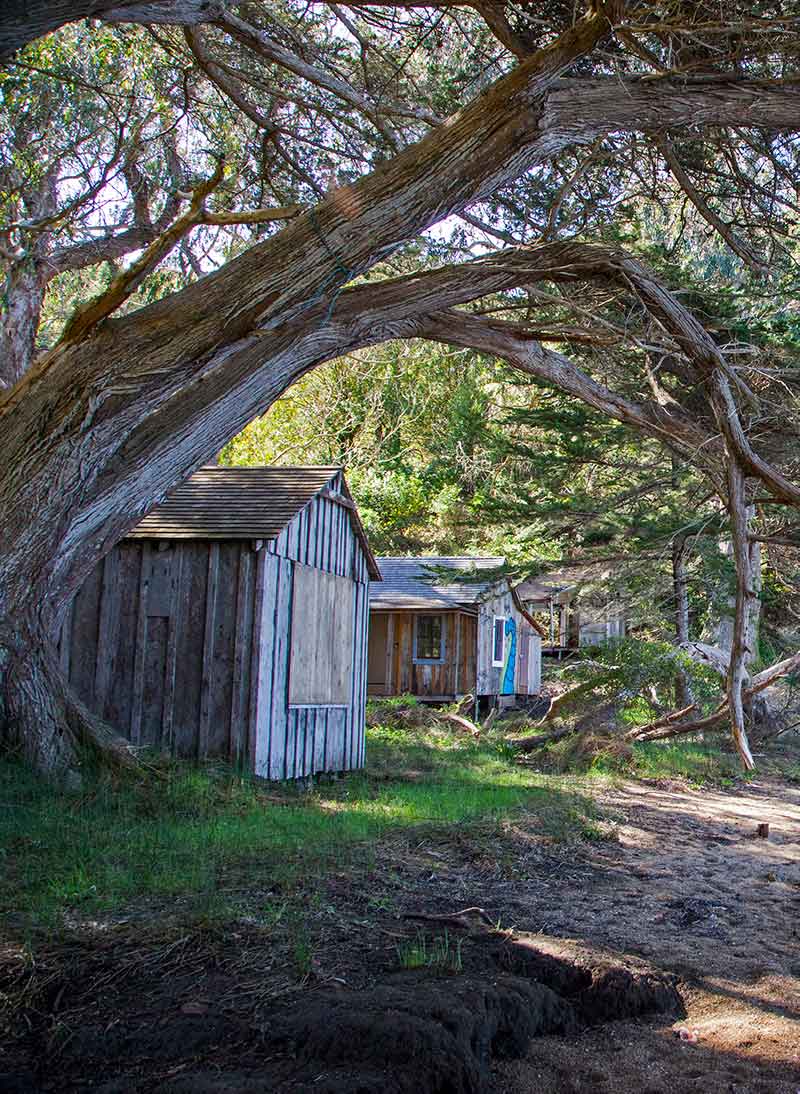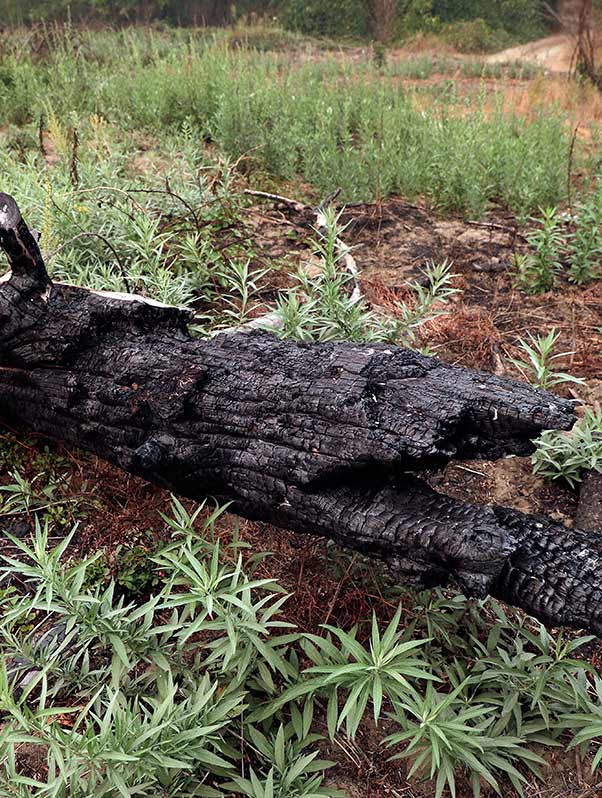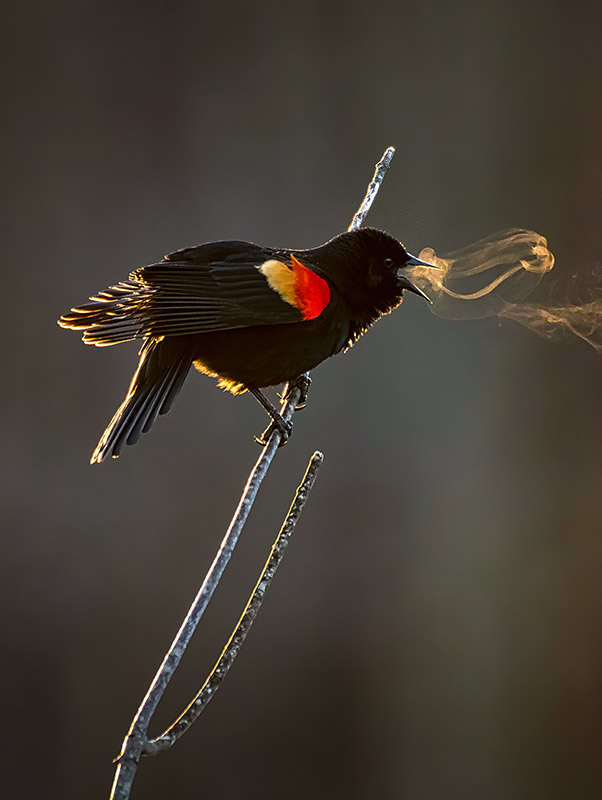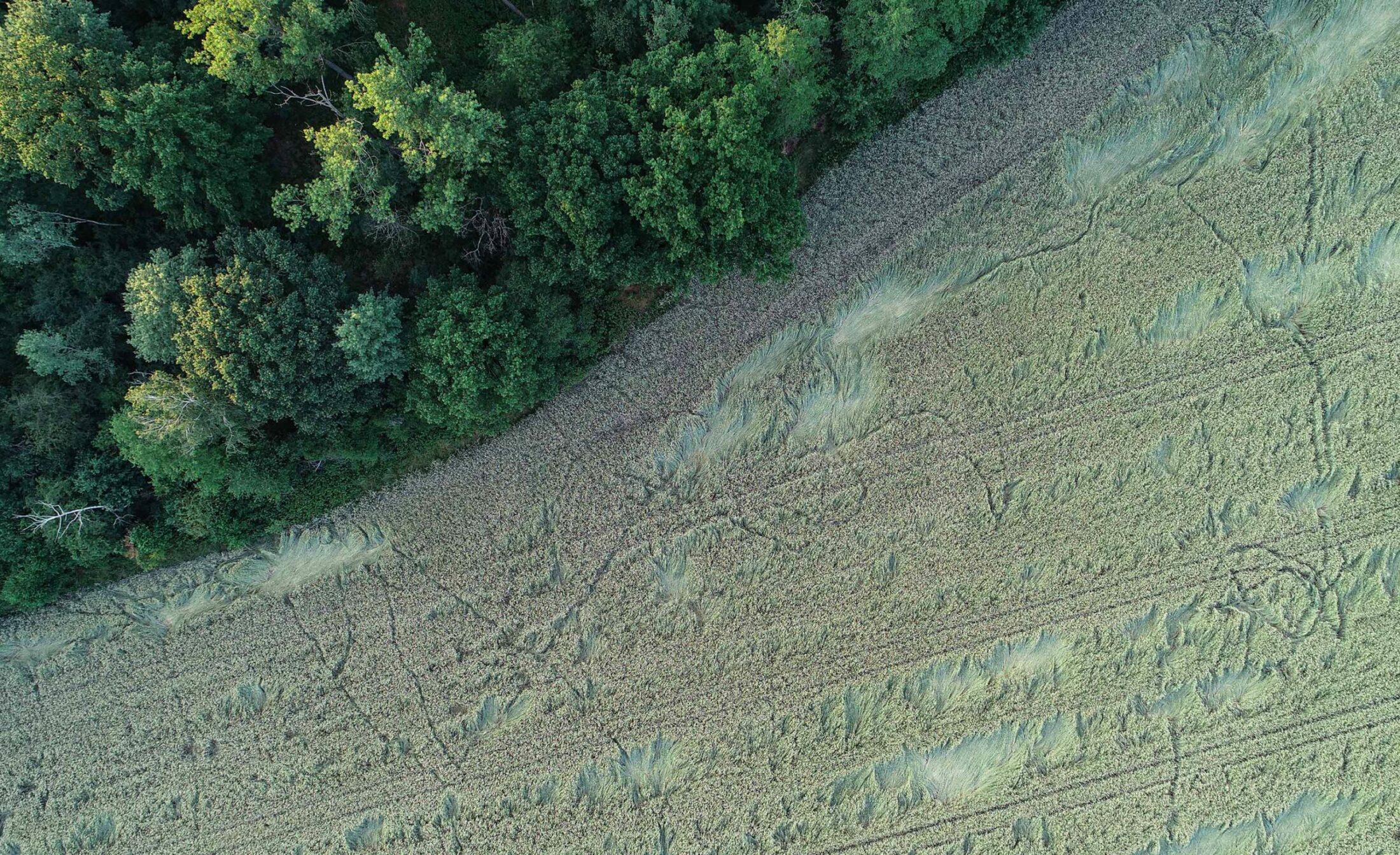
Photo by Patrick Pleul/picture alliance via Getty Images
Desire Paths
David Farrier is a professor of literature and the environment at the University of Edinburgh, where he also leads an Environmental Humanities research network. His current research is in literary responses to environmental change and the Anthropocene. His books include Anthropocene Poetics; Postcolonial Asylum; Unsettled Narratives; and Footprints: In Search of Future Fossils, which was awarded the Royal Society of Literature’s Giles St. Aubyn Award for nonfiction. David’s work has also appeared in Aeon, The Atlantic, and Lit Hub. His latest book is Nature’s Genius: Evolution’s Lessons for a Changing Planet.
As the coronavirus shrinks the scale of our individual worlds and sets us on an uncertain and increasingly narrow path, David Farrier finds inspiration in the meandering imprints left by the tracks of animals.
Being restricted in where we can go offers new opportunities for noticing where we are. Since we went into lockdown, I’ve been working in a room that looks down on our suburban back garden. One day, when lockdown was still new, I was staring out the window, struggling to concentrate and trying to get to grips with the way the world seemed to have slipped its rails, when something caught my eye: a bluish line running the length of the lawn, about three feet from the right-hand edge. It broke from between two planters on the patio beneath my window, and followed a shallow parabola under the boughs of the apple tree before disappearing into the long grass under the trampoline.
Faint but insistent, it was a desire path, probably made by foxes.
I’m not sure why I hadn’t noticed it before. Perhaps it was new, but far more likely I simply hadn’t been paying attention. Hunkered down through the last weeks of the Scottish winter and absorbed by the demands of work, I had been blind to this path that crossed with mine. It was ordinary and incidental, just a shadow, but it offered a glimpse into a life lived unseen within touching distance of my own.
Desire paths speak of possibility. All animal paths are desire paths; so were the first roads, shaped by nothing more than a common urge to join one place to another. The poets Paul Farley and Michael Symmons Roberts write that desire paths “begin over time, imperceptibly, gathering definition as people slowly recognise and legitimise the footfall of their peers.” It’s been suggested that fifteen journeys are all that’s required to begin a fresh way, to introduce new shapes to the built environments we live in. Where the designed way is often straight and rectilinear, the desire path bends and flows. It offers grace rather than instruction.
Paved roads show us where we ought to go, but desire paths are made when we step off the road and let our hearts decide the way. They seek out the most direct connection between where we are and where we wish to be. Worn by the pressure of passing feet, they’re declarations of a kind: there is another way.
For many of us, lockdown has been a retreat into what is most familiar. Each day is distilled to a few basic elements: the same walls, the same street, the same single trip outside for exercise or to buy food. It’s as if the world has shrunk to a scale more familiar to the nineteenth century than the twenty-first, the scale of the foot rather than the wheel.
Since it hasn’t been possible to wander far, I have been exploring ways to get lost close to home. When I’m out running or for a walk with my daughter, my eye is drawn by the shadow that indicates a gap in the tree line, a break in a fence, or a passage between houses—routes which, pre-lockdown, I’d probably have ignored because they didn’t take me directly to where I wished to go. Now, though, I want the unvisited corners, the generosity of the unexpected. I want to leave the path I know and join one I don’t.
One evening I took a walk across the golf course near my house. I have traveled the road that runs alongside it hundreds of times on my way to the beach where I run, glimpsing the gently sloping green through the trees, but never set foot on its manicured turf. However inviting its openness was, it was also very clearly out of bounds to walkers. But since no one was playing golf during lockdown, it had become space too valuable to leave alone and people had begun to move onto it to walk their dog, or just to be out of the way of others. Stepping onto the green, I felt in my shoulders the slight ease of trespass. This evening it was largely empty, just me and, in the distance, two men and a boy taking it in turns to ride a mini-motorbike over the course. When it came to the boy’s turn, the men would yell out directions (which he ignored). The grass was scuffed with the arcs of earlier skids. The late evening sun raked the green with gold.
“Turn!” they shouted. “Turn!”
A line of trees marks the northern limit of the course. Beyond lies the Firth of Forth; beyond that, the hills of Fife. Suddenly, to my surprise, a section of the tree line leapt forward. What I had taken for the boundary—had always looked, from the road, like a straight line—now acquired depth, pushing out untidily into the regimented green. A trick of perspective, but it seemed too good to be true—somewhere undiscovered. A new wood!
On closer inspection, it was just a thin spinney lining a choked stream. There was litter everywhere, mostly empty beer cans and torn plastic. Through the trees, the flames of a small fire jerked; nearby, someone stood drinking. A number of scrubby paths spread out from a knot at the edge of the wood, but it didn’t take long to exhaust them as they ran into a tangle of briars or crosshatch of fallen trunks. Scrambling down the shallow bank to cross the stream, I saw a couple sitting against a metal fence, sharing a sleeping bag. The woman sat up sharply at the noise, and I left them to their privacy.
When I returned home, I picked Rebecca Solnit’s A Field Guide to Getting Lost from the bookshelf. “How will you go about finding that thing the nature of which is totally unknown to you?” she asks, quoting a speaker in Plato’s dialogue, Meno. The answer, Solnit writes, is to practice getting lost; to submit to a kind of “voluptuous surrender.” By contrast, the pleasures of getting lost during lockdown can seem thin. The paths I find never travel very far, and if they don’t come to a dead end, often arrive somewhere unexceptional. There are gifts: emerging one morning from a scrap of woods into a tilled field, I surprised three deer, their white tails flashing as they turned away. But the path itself was no more than a brief detour that left me scratched and sweating. More often than not, I have to turn back. Why then look for opportunities to get lost? Because, occasionally, the new path reveals a new route.
The coronavirus pandemic has left us walking an uncertain path between different worlds. Writing of life in the immediate aftermath of the collapse of the Soviet Union, Svetlana Alexievich wrote, “our time comes to us secondhand.” The time we’re living through feels borrowed against a future which is no longer guaranteed. There are glimpses of what the new world could be like—slower, quieter, more given to care—but much of this strange time looks like the old world of inequality and neglect asserting itself with a vengeance. The transition from old to new seems far from clear. This is why, I think, I keep looking for new ways to get lost, even briefly, in places that are most familiar to me. Discovering another way to join two points I have always connected by the same traverse yields a richer, more densely knotted sense of place. It shows me that, in the midst of constraint, new discoveries are possible. I began to realize that what I was seeking were new ways to bridge a familiar distance.
Blue lifts the heart. But does anything lift the heart like the blue of distant hills? My house stands at the top of the same hill which wears the neat green of the golf course. My bedroom window looks north across the Forth estuary toward Fife. Each morning, I open my curtains to the same hills on the horizon. Although I have never stood on them, I know their precise shapes and contours as immediately as I know, at a distance, my teenage son’s long-limbed stride.
“For many years, I have been moved by the blue at the far edge of what can be seen,” writes Solnit. As a boy, I had a recurring daydream about this. Facing a distant tree on a distant hill, I would imagine another boy standing beneath it, watching me. I could feel its rough bark under his hand, the rich blue chill of its shade, hear the rush of wind through its branches. And I imagined him seeing me with the same clarity, as clearly as if we stood on either side of a fence. Meeting across the space between, each wreathed in the blue of distance.
The blue is a trick, of course. Dust and droplets of water in the atmosphere scatter light as it passes through them, blue light the most because its wavelength is shortest. As Solnit writes, the fantasy of a blue world you could walk into, moving beyond the familiar greens and browns to a country where “you too would be blue as the Hindu god Krishna,” is seductive. And yet, no matter how far we travel, the blue always recedes: “the far becomes the near, and they are not the same place.”
I spent the last afternoon at work before my family entered self-isolation watching a short video clip, over and over again. It contained the first-ever footage taken of the cavity beneath Thwaites glacier in West Antarctica. More than 1,000 miles from the nearest research station, Thwaites is one of the most distant and difficult to reach places on Earth. It is larger than Washington State, only slightly smaller than the British mainland, and holds enough water to raise global seas by half a meter. Already, it contributes around 4% of sea level rise each year, shedding 600 billion tons of ice in the past decade. Warm water has shaped its own desire path beneath the ice. Upwelling from polar currents, it nuzzles the ice and pushes back the grounding line, the point where the ice meets bedrock, pinning the glacier in place. In 2018, NASA discovered a vast cavity, two thirds the size of Manhattan, has melted away beneath the glacier and created a floating ledge of ice, 580 meters thick.
The video I watched compulsively was, according to the scientists who released it, “our ‘walking on the moon’ moment.” To recover the images, they lowered a torpedo-shaped robot through a warm-water-drilled hole in the ice, which then swam for a kilometer down the sloping cavity to the grounding line. There’s a lunar quality to the footage, the curved underside of the immense glacier, speckled and pocked, suspended over darkness starred with the zinc-white forms of sea creatures. And yet, Thwaites is the ultimate refutation of distance. A confluence of desire paths meets underneath it, formed by the insistence of water, the curiosity of the scientists, and by us. The path beneath the glacier is the trace of countless journeys and desires which, unchecked, have brought us to the threshold of an utterly changed world. Like a key in a lock, Thwaites holds back the entire West Antarctic ice sheet. Turning the key would release enough meltwater to raise the oceans by three meters and inundate New York, Shanghai, and Bangladesh. However removed it might seem, our connection with this glacier is as intimate as with our dearest loved ones.
Distance turns out to be a mirage. The video beneath Thwaites takes me to perhaps the most remote place on the planet. Yet I have returned to the footage many times during lockdown, and each time the vast space between it and me collapses. The far becomes the near, and I enter the blue of distance.
In the White Book, Han Kang writes,
Each moment is a leap forwards from the brink of an invisible cliff, where time’s keen edges are constantly renewed. We lift our foot from the solid ground of all our life lived thus far, and take that perilous step out into the empty air.
A desire path is no more than the trace of a decision—less than that, an impulse—to find a new way to join what we know with what we have yet to discover. If I have discovered anything in the past weeks, it is that, for good and ill, we are more connected than we think; that we can find more ways to bridge distance even in the most constrained and unlikely circumstances. There’s something uplifting about the irrepressible nature of desire paths, the way they insist on adding to our store of attachment. They show us improvising the world. The way ahead is not ordained. Every step we take makes the path.
I have yet to see the creature that drew a dark line through my garden. But the path it leaves is there, faint still but getting deeper.
